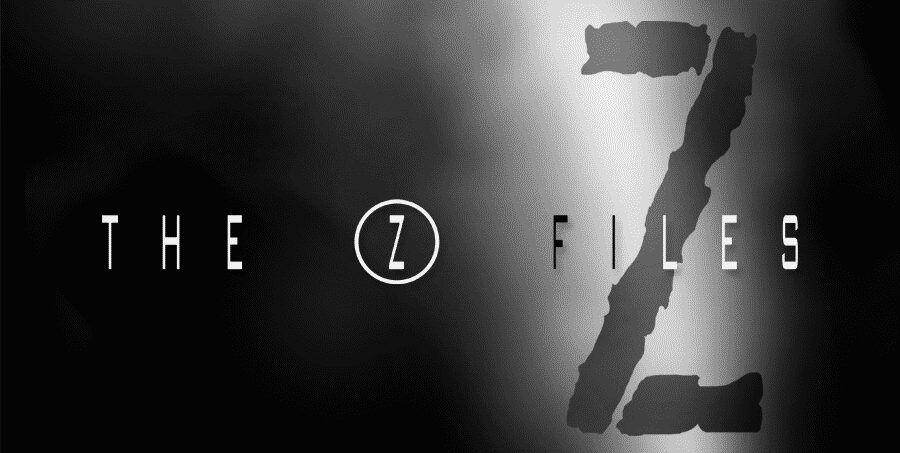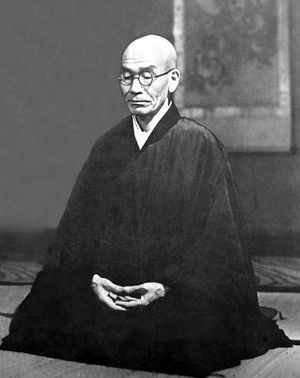Whenever Gutei Osho was asked about Zen, he simply raised his finger.
Once a visitor asked Gutei’s boy attendant, “What does your master teach?”
The boy too raised his finger.
Hearing of this, Gutei cut off the boy’s finger with a knife.
The boy, screaming with pain, began to run away.
Gutei called to him, and when he turned around, Gutei raised his finger.
The boy suddenly became enlightened.
When Gutei was about to pass away, he said to his assembled monks, “I obtained one-finger Zen from Tenryu, and used it all my life but still did not exhaust it.”
When he had finished saying this, he entered into eternal Nirvana.
Mumon’s Comment
The enlightenment of Gutei and of the boy does not depend on the finger.
If you understand this, Tenryu, Gutei, the boy, and you yourself are all run through with one skewer.
Mumon’s Verse
Gutei made a fool of old Tenryu,
Emancipating the boy with a single slice,
Just as Kyorei cleaved Mount Kasan
To let the Yellow River run through.
Gutei, (Chinese: Juzhi Isshi) was a 9th-century Chinese Zen master. He was the eleventh successor (after Bodhidharma), in the line of Nanyue Huairang and Mazu Daoyi. He was the student of Koshu Tenryu (Hangzhou Tianlong) and he lived in the same period as Rinzai (Lin-chi). Due to this story, Gutei has commonly become known as Gutei Isshi, meaning “Gutei One-finger”.
So, how to understand this story of Gutei and his One-Finger Zen?
To arrive at an answer, we should go back to the beginning. Gutei attained enlightenment when Tenryu raised one finger. You can find the story here. Gutei attained enlightenment because the conditions were right for him to awaken, and the raising of the finger became just the sparkle who lit the fire. From then on, Gutei used the raised finger to answer all questions.
Later, Gutei’s disciple thought that the gesture had some specific meaning, and when asked what Gutei’s teaching was, he did the same gesture. The young monk was mistaking the method for the lesson. Gutei’s teaching wasn’t the holding up of one finger – the gesture was just the action that’s free from words, that’s beyond this or that, that is simply suchness in the present moment.
Gutei cut off his delusion. He literally cut off the monk’s finger. The attendant achieved enlightenment in the moment that Gutei cut one finger (monk’s finger) and then raised another one (his own). But it wasn’t these actions that caused the awakening in the attendant. As Zen Master Dogen explains, the attendant achieved enlightenment due to years of practicing with his teacher.
*
The cutting off of the finger is not the point of the story – although it’s just something that the mind can get fixated on. The point of the story is that in buddha-nature, human actions, just like the natural events, are beyond meaning or significance. The meaning or significance is later applied by the human mind, and may differ from person to person.
*
This koan is one of the most famous cases in the Wumen kuan (Mumonkan), but like Nansen’s killing the cat, it’s easy to get sidetracked by the drama of the knife, the cutting, and the fingers and miss the real point of Gutei’s one-finger-Zen.
*
Gutei used no verbal answers, but he had the one-finger-Zen which he used to answer all questions. Beyond all dichotomies, for the rest of his life, Gutei offered everyone this one-finger-Zen. But, Gutei admits to the assembled monks that his “one-finger Zen” was a lesson that he had learned from the Master Tenryu. In other words, his one-finger Zen was acquired from another. Still, Gutei cut off his student’s finger, but he did it precisely to prevent the student from using the one-finger-Zen as a mere imitation of a master, preventing the falling into a trap of his attendant.
And yet the student became enlightened, because he understood, suddenly, that the way of Zen is never that of mere imitation and that a direction is never anything more than the proverbial finger pointing at the moon.
*
Wumen tells us, “The enlightenment of Gutei and of the boy does not depend on the finger.” The purpose of any Zen reaction is not its content (the lifting of a finger, the holding up of a flower, the killing of a cat), but that the reaction embodies a pure eventuality within the impermanent moment, and expresses that moment without pretense or attachment.
*
According to a Chinese legend, Korei, a mountain deity of great strength, divided Great Mount Ka in two – one part Mt. Shuyo, the other Mt. Ka – by the mere touch of his hand, allowing the waters of the Yellow River to flow through. In other words, Wumen says that Gutei and his student are divided. They are a master and a student, two subjects rather than one subjectless nothingness. This division is always artificial, although it is not until Gutei lies on his deathbed that the two become reconciled.
*
There are two approaches to working with this koan. One is, as with the breakthrough koans, to become one with it and go beyond the duality of subject and object. The other is to discover its higher message through contemplation. These two are not necessarily in contradiction because one can conceptualize non-conceptuality, which is what a real Zen answer actually demonstrates.
*
If we try to conceptualize the ‘one-finger’ of Gutei we will fail to grasp its very essence. If we raise our finger (thereby giving the Zen answer), what will prevent the master from cutting this finger off? Is it a real finger, or is an imitation?
To understand the one-finger of Gutei we have to embody the unity of substance and function. Only when that finger is raised from the place of having embodied one’s pure nature, it becomes a living manifestation of truth.
Otherwise, it is not “one-finger-Zen”, it is just another finger of ignorance.
Case 3 : Mumonkan
photo credit : photo




